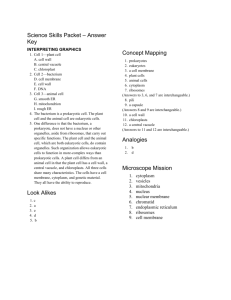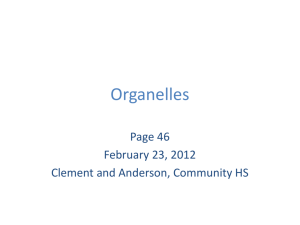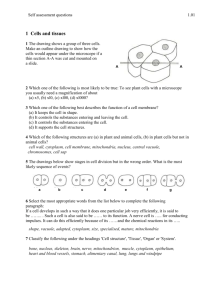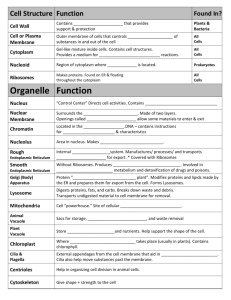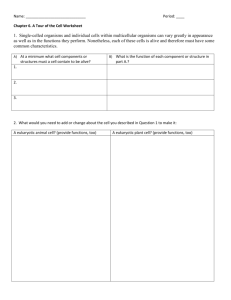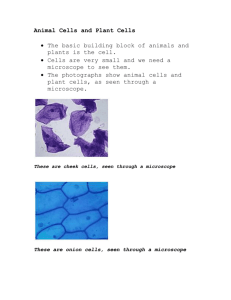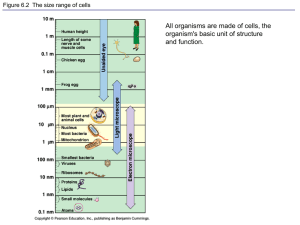Molecular Biology
advertisement
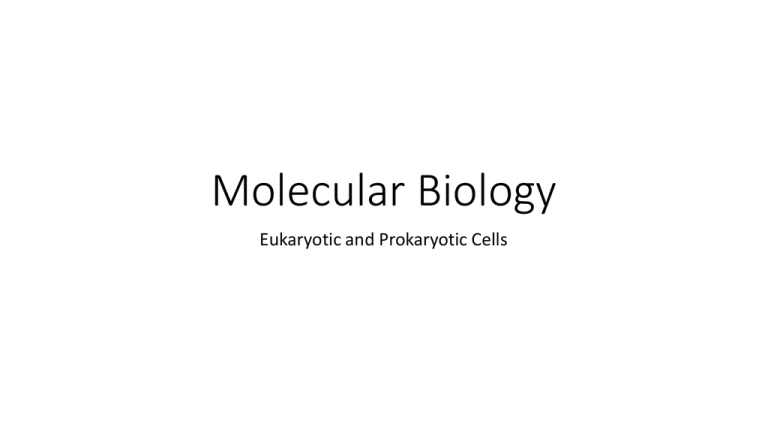
Molecular Biology Eukaryotic and Prokaryotic Cells What are the characteristics of Living Things? What are the characteristics of Living Things? -Excrete Waste -Reproduces -Respond to stimuli and react/adapt to environmental conditions -Utilizes energy/fuel for survival -Grow Why can animals dance? Why can animals dance? • Cellular Structures in Animal Cells • Flexible Membrane • Can Move Around All Cells All cells share four key components: 1. A plasma membrane, an outer covering that separates the cell’s interior from its surrounding environment. 2. Cytoplasm, which consists of the jelly-like cytosol inside the cell, plus the cellular structures suspended in it. (In eukaryotes, cytoplasm specifically means the region outside the nucleus but inside the plasma membrane). 3. DNA, the genetic material of the cell. 4. Ribosomes, molecular machines that synthesize proteins. Prokaryotic Cells • Prokaryotes do not have a membrane bound nucleus, are smaller, and have circular DNA. • A non-photosynthetic bacterial cell has a cell wall outside of its plasma (or cell) membrane. The contents of the cell include the semifluid cytoplasm and numerous small specks called ribosomes. Ribosomes are the sites of protein synthesis. The single circular chromosome is found in the nucleoid region. Motile bacteria may have long projections called flagella. Eukaryotic Cells • Eukaryotic cells are cells that contain a well-defined nucleus, and in which the other organelles are held together by membranes. Plants and animals are both eukaryotes. Primary Differences Between Plant and Animal Cells • Plant cells have to perform two functions not required of animal cells: • Produce their own food (which they do in a process called photosynthesis). • Support their own weight (which animals usually do by means of a skeleton). • The structures possessed by plant cells for performing these two functions create the primary differences between plant and animals cells. • These structures are: • Cell Wall: a wall on the outside of the membrane, which, in combination with the vacuole (as described below), helps the cell maintain its shape and rigidity. • Plastids: used in photosynthesis to convert sunlight, carbon dioxide and water into food. The most well-known plastids are chloroplasts, which contain the chlorophyll that gives many plants their green hue. • Large Vacuole: while animal cells may have many tiny vacuoles, a plant cell usually has a single large vacuole, which serves as a storage tank for food, water, waste products and other materials. The vacuole has an important structural function, as well. When filled with water, the vacuole exerts internal pressure against the cell wall, which helps keep the cell rigid. A plant that is wilting has vacuoles that are no longer filled with water. https://www.khanacademy.org/science/biology/structure-of-acell/prokaryotic-and-eukaryotic-cells/v/prokaryotic-andeukaryotic-cells

